It's always more fun to DIY. Every week, we'll spare you a trip to the grocery store and show you how to make small batches of great foods at home.
Today: Who needs takeout? Mandy of Lady and Pups shows us how to make rice noodles from Xi'an, China.
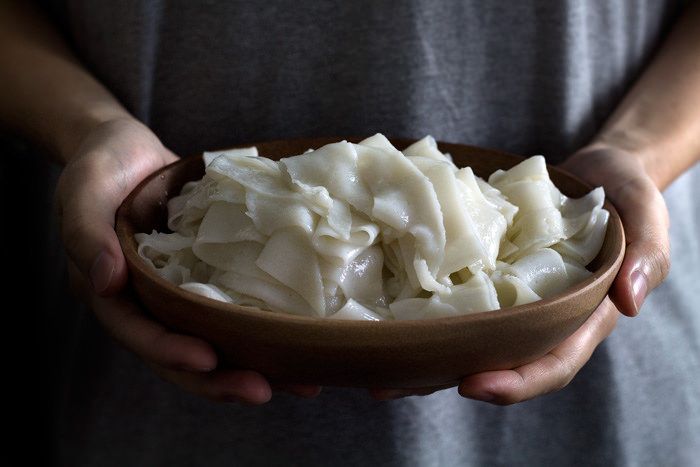
In 2008, Anthony Bourdain dined at the New York City-based restaurant, Xi'an Famous Foods and exclaimed, "I’ve never had anything like this before!" Since then, Xi'an Famous Foods has exploded in popularity, and number, in Manhattan. As the brand grew, I felt that it was unjust that the restaurant, known for its traditional wheat flour and cold skin noodles, neglects to serve my favorite noodle from the Xi'an region, rice skin noodles.
Unlike cold skin noodles, which are made from wheat starch or cornstarch, rice skin noodles are traditionally made in the northwest region of China with whole short-grain rice or rice flour. These noodles are slippery and smooth, with a chewy texture similar to Cantonese dim-sum zhu-chang-fen. They have a subtle rice fragrance and are served straight out of the steamer.
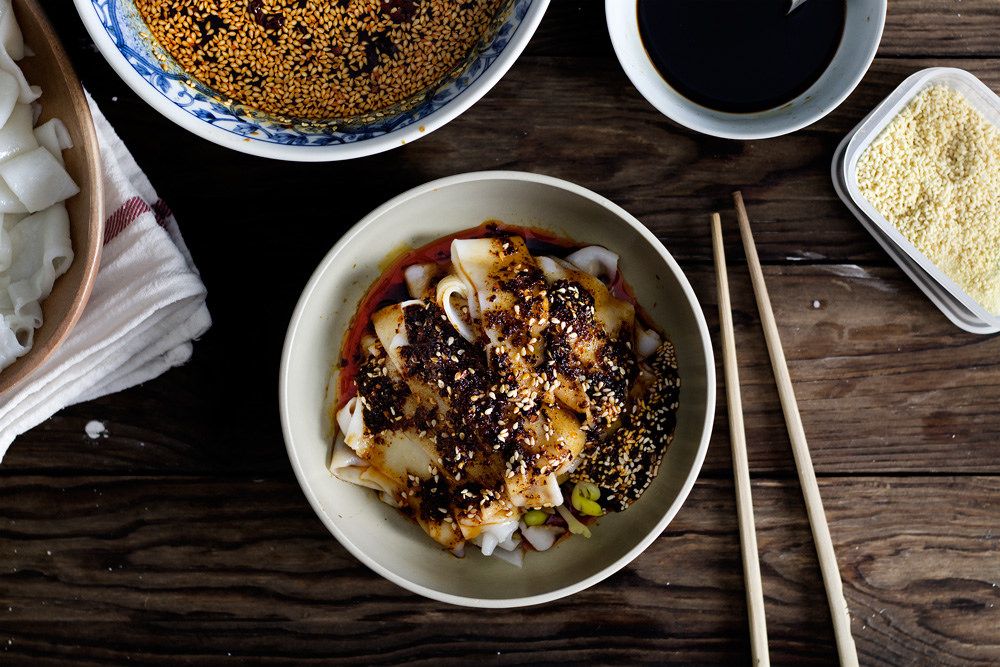
While delicious on their own, the noodles are best swimming in an ocean of aromatic, dangerously red, and senselessly spicy chili oil made with Sichuan peppercorns and spices. And just when I think it's too much to take -- the pleasure, or the heat -- I add in some blanched bean sprouts for an occasional crunch and refreshment that tells me, yes, you can carry on.
Xi'an Rice Skin Noodles
Serves 3 to 4
200 grams* (or 1 heaping cup) uncooked short-grain rice or rice flour
535 grams (about 2 cups plus 2 heaping tablespoons) water
65 grams (or 1/2 cup) potato starch (constrach will also work fine)
Canola oil for greasing
*I strongly recommend measuring the ingredients for this recipe by weight instead of by volume, as the quantities are not as exact in volume. For example, while my rice flour weighed 170 grams and came out as at a bit more than 1 1/2 cups, the online conversion says it should be only 1 cup. So if you can, weigh it.
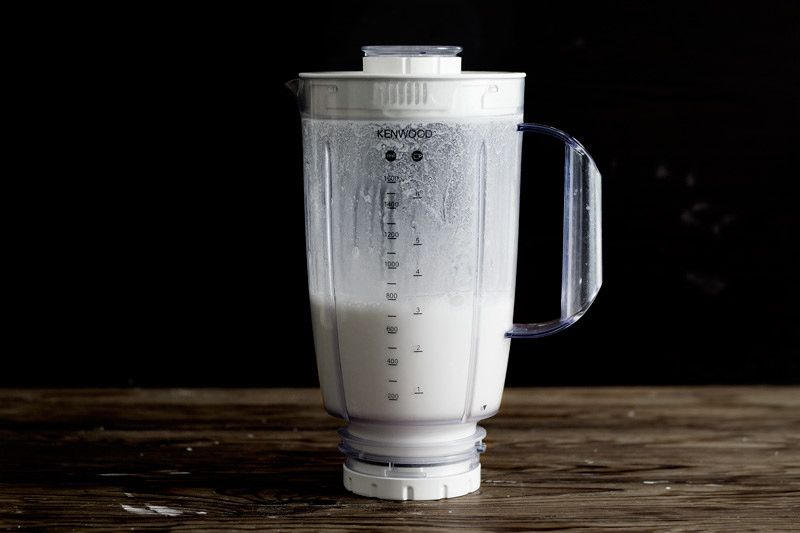
The rice noodles can be made from either short-grain rice, or rice flour. If using uncooked short-grain rice, put the rice in a large sieve and rinse it under water. Shake off any excess water, then transfer the rice to a blender along with the 535 grams of water. Let the rice soak for 4 to 5 hours, at which point the grains should crush easily between your fingers. Add the potato starch or cornstarch and blend for 2 to 3 minutes, pausing to scrape the mixer down from the edges as needed. Once liquified, run the mixture through a very fine sieve into a large bowl. Use the back of a spoon to press down any large rice clumps to help them pass through the sieve.
More: Looking for another excuse to eat rice? Here are five.
If using rice flour, whisk together the flour, potato starch or cornstarch, and water together until well combined in a large bowl.
No matter what method you use, set your liquified rice mixture aside as you set up your steamer.
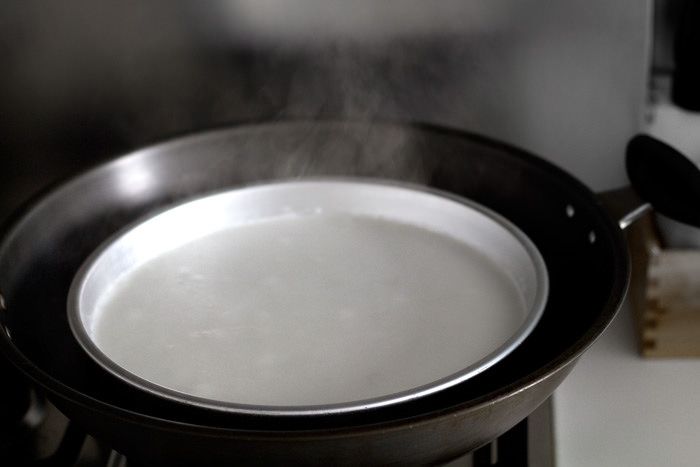
Fill a large steamer with enough water to reach just below the steamer basket and bring it to a boil. (If you don't have a steamer, add water to a large pot or wok, then place a circular metal rack that's taller than the level of the water inside. Put the lid on and bring the water to a boil over high heat.)
Find a shallow sheet pan that fits into your steamer or makeshift steamer (I used a pizza pan, but a shallow metal pie pan will also work), and brush the pan with canola oil. Whisk the batter, then pour in enough to cover the pan in a thin layer. Place the pan inside of the steamer as level as possible, so that the noodles cook evenly.
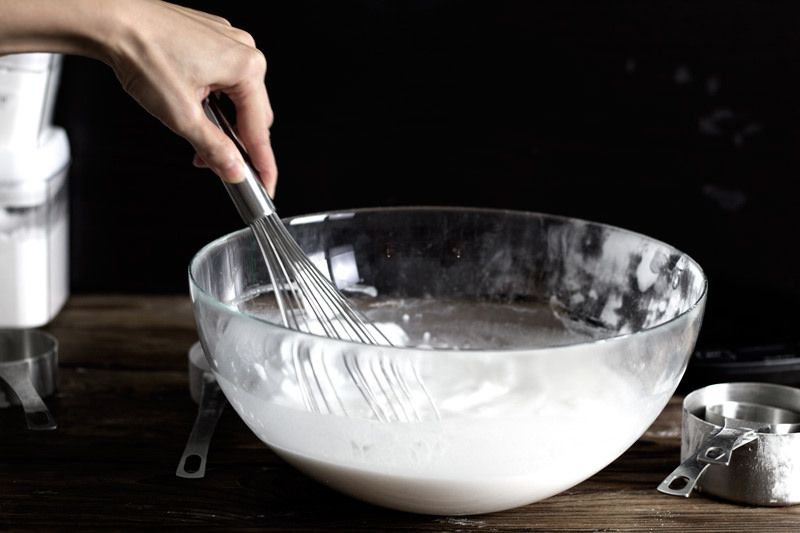
Place the lid on the steamer and steam over high heat for 2 to 3 minutes, or until large bubbles form on the surface of the sheet of rice noodles. If you have another shallow pan, repeat this process with the second pan while you remove and cut the others.
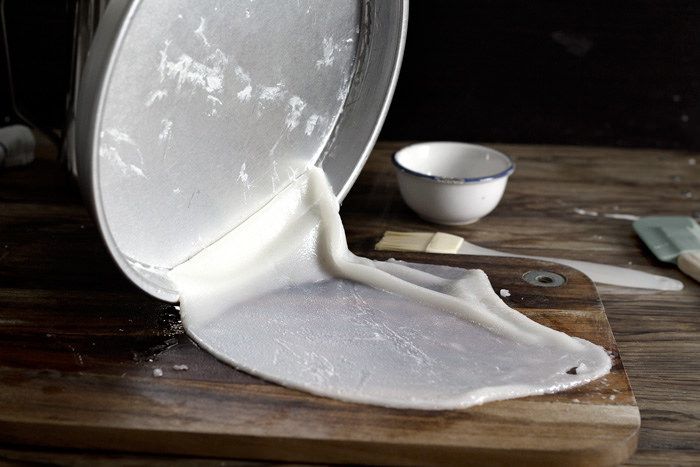
To remove the steamed noodles from the pan, thinly brush the top surface of the cooked noodle sheet with canola oil, then run a spatula around the edges. Tilt the pan towards a cutting board, then gently scrape the noodle-sheet onto the cutting board. Cut the noodles into thick strips with a pastry cutter. Don't worry if your strips are curling up rather than staying flat -- no matter what, the noodles will stick to each other in the absence of liquid, so don't freak out. They will separate easily once sauce is applied.
Repeat the process until you’ve used up all of the batter, and serve the noodles hot. I usually serve mine with with blanched bean sprouts, seasoned soy sauce, 1/4 teaspoon granulated chicken bouillon, and lots of chili oil.
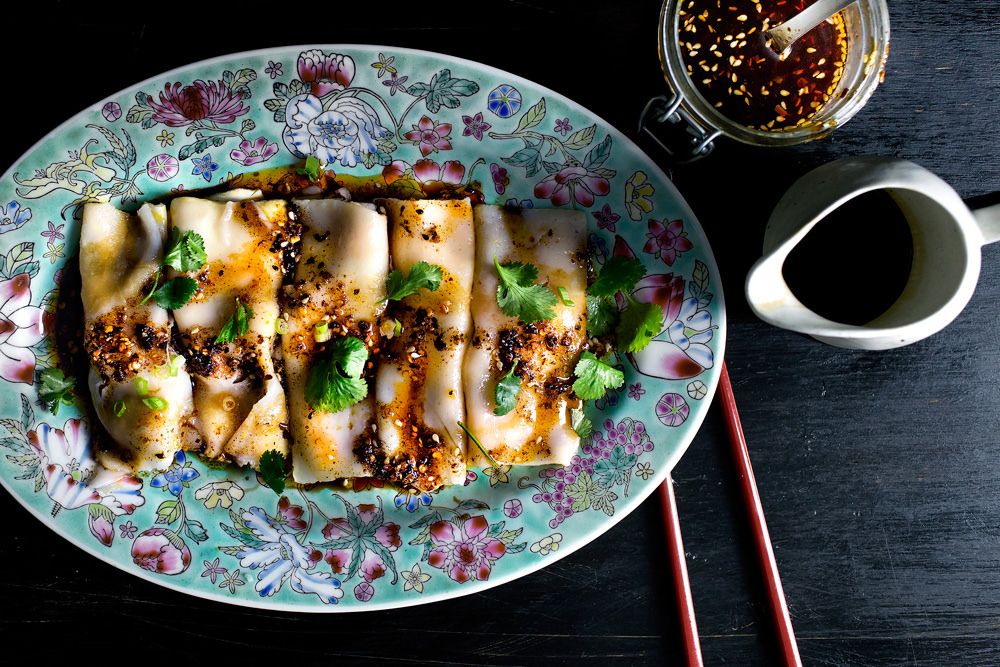
For a little variation, you can add lightly beaten eggs, shrimp, or ground meat over the steamed rice noodle. Put the lid back on and steam for another minute until all the other ingredients are cooked. With a lightly oiled spatula, scrape and fold the rice noodles over themselves (this is going to take a bit of practice) to make a roll, then serve immediately.
See the full recipe (and save and print it) here.
Photos by Mandy @ Lady and Pups








See what other Food52 readers are saying.